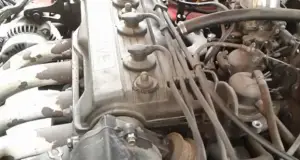Comprehensive Guide on How Does Vacuum Generator Work?
Do you own a vacuum cleaner? If the answer is yes, then you’re likely familiar with the aggravation that follows a power outage, leaving your pristine floors to accumulate dirt. A straightforward remedy is to purchase a vacuum generator. However, prior to making that decision, it’s important to understand the workings of a vacuum generator.
In this blog post, we will discuss what vacuum generators are and how they work.
What are vacuum generators?
Vacuum generators generate a level of vacuum that may be needed for object handling tasks. Such devices create a vacuum in 2 ways. They may do so pneumatically by using compressed air or electrically by using a displacement pump. However, electrical generators are also known as vacuum pumps.
Vacuum generators mostly come in a very extensive range of types, designs, sizes, and efficiencies. This wide range is available to suit wide-ranging applications. However, maximizing the performance for a given task is essential. But anyone who is going to use a vacuum system must take a close look at the overall costs before even the specification of necessary components.
Where Vacuum Generators are Used?
The vacuum generators are usually used in conjunction with vacuum suction cups. And this vacuum suction cup is connected to the outlet of the vacuum generator and that outlet is attached to the object that is being handled.
How Does Vacuum Generator Work?
Here are some of the working or operating principles of vacuum generators:
Venturi Principle
Working principle of Venturi Principle:
- The function of Pneumatic vacuum generators is based on this principle.
- In this vacuum, compressed air is introduced into the ejector.
- Because of the minimized cross-section of the motive nozzle, the compressed air is being accelerated. As a result, dynamic pressure goes up and the static air pressure ultimately reduces.
- As it has passed through the motive nozzle, the accelerated air expands and a vacuum is created.
- Air is sucked via the vacuum connection into the ejector.
- And then the compressed air escapes from the ejector via the silencer along with the sucked-in air.
Benefits
- Vacuum generators that work according to this principle are perfectly suitable for very high accelerations.
- With the help of the Venturi principle, you can easily control the vacuum grippers.
- It may have ejectors in various designs for centralized and decentralized vacuum generation depending on the application.
- You may find several power classes to suit the workpiece and other applications.
Bernoulli’s Principle
Here is the working system according to Bernoulli’s principle:
- It has a Pneumatic operation with integrated vacuum generation.
- The compressed air escapes from the holes in the suction cup. And it is amazingly accelerated while doing so.
- Because of an increase in the speed, the static pressure may fall and a vacuum is created.
- The accelerated air may escape from the side and an air cushion is created between the workpiece and the floating suction pad.
- With this operating system, leakage is compensated through a high flow rate. It means that even a porous workpiece may be handled and also get separated.
- The Bernoulli effect makes sure that the workpieces can be handled with minimal contact.
- The floating suction cups function or work according to Bernoulli’s principle.
Benefits
- It allows you very safe separation of thin and porous workpieces.
- This principle has very low-contact and soft handling of sensitive and thin workpieces, all credit goes to Bernoulli’s effect.
The Coanda Principle
Below is the explanation of the working of a vacuum generator by the Coanda principle:
- It does Pneumatic operation with integrated vacuum generation.
- With the help of this operating principle, the compressed air is guided to an annular gap that may accelerate it.
- The rise in the flow speed results in the “Coanda effect”. With this, the escaping air follows a convex surface.
- The air flowing along with the surface generates suction in the ambient air.
Benefits
- This operating principle gives you a high suction rate and low air consumption because of the Coanda effect.
- By using this principle, the suction areas may also be very easily engaged.
- The maximum contact surface with narrow positioned vacuum openings can prevent the workpiece from being sucked in or damaged.
Types of Vacuum Generator
The vacuum generators are usually of 2 types. And these are pneumatic vacuum generators and electric vacuum generators (also known as vacuum pumps).
Pneumatic Vacuum Generator
Pneumatic vacuum generators are also known as ejectors, and they use a pneumatically driven nozzle to create a vacuum. This type of vacuum is suitable when the application needs a short and rapid cycle time. This type of vacuum generator may be integrated directly into the system because of its lightweight and very compact design.
According to the number of their nozzle pairs, they are divided into 3 various types. Single-stage, multi-stage, and compact vacuum generators. However, a pneumatic vacuum generator operates according to the Venturi effect.
Electric Vacuum Generator
Electric Vacuum generators also known as vacuum pumps, are generally used when high suction capacity is needed. They can also be used when there is no possible availability of compressed air. These vacuum generators are operated by removing the air molecules from the vacuum chamber.
It also consists of a mounted rotary impeller having carbon blades. However, the impeller is pressed against the wall of the housing with the help of centrifugal force. And the size of each chamber alters with the rotation of the impeller. As the chamber gets larger, the air inside the vacuum expands.
Difference between Vacuum Generator and Vacuum pumps
The major differences between these two are:
- Vacuum Generator: this builds up a vacuum quickly and has short cycle times. All credit to its simple and compact design that may be integrated directly into the system that is close to the vacuum suction cups.
- Vacuum Pumps: this one may generate very high suction rates along with high levels of vacuum when required. You may know that vacuum is created by using an electric motor, this one is best suited for the application where compressed air is not easily available.
We hope that you understand now how does vacuum generators work along with their type and benefits. Now choose one the suits you best according to your needs.




